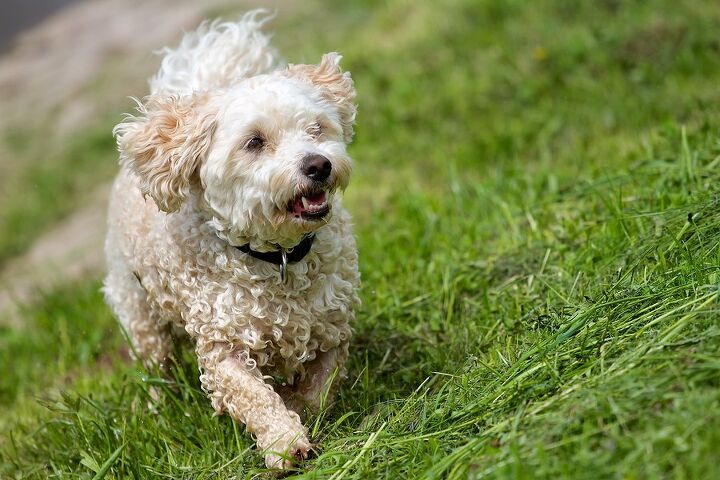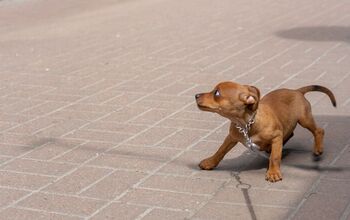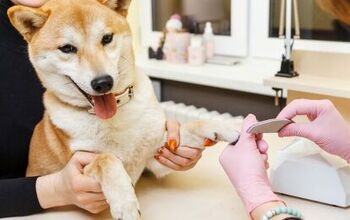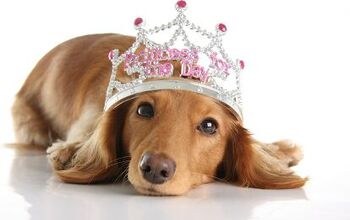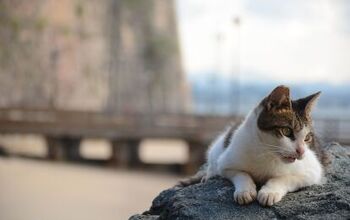Havapoo


About Havapoo
Havapoo Basics
Everyone has different needs for what they need in a dog. Some are looking for service animals to aid with their ailments. Others seek working dogs to make their lives and jobs easier. However, if you’re looking for a cuddly, fluffy companion to spend your days with, the Havapoo is definitely a pup you should consider. Also referred to as a Poovanese (or even cuter and less bathroom themed names like Havanoodle or Havadoodle), this energetic little guy also has hypoallergenic fur, making him or her perfect for families looking for a furry friend that won’t cause a sneezing fit with each cuddle session. You can snuggle your Havapoo without fear allergy sufferers!
As you may have gathered by now, the Havapoo is not a purebred dog. They are a cross between a Havanese and a Poodle (Miniature or Toy). These designer dogs inherit traits from both their mom and dad, resulting in a unique canine with a beautiful appearance and wonderful personality. Affectionate, smart, and easy to train, the Havapoo appeals to many potential owners. The only downside is that these dogs make such perfect companions that you may prefer your Havapoo to all of the humans in your life and withdraw accordingly.
Havapoos are moderately active, which makes them good choices for small homes or apartments (provided that they are still brought outside to run and play at the park or in a fenced-in yard). Their low-maintenance exercise needs and sweet nature also the reason why retirees might find this adorable designer dog a perfect companion to share their golden years with. You’ll get all of the affection and attention that you’ve come to expect from the best dog breeds on the market with only a fraction of the exercise that those other pup’s require.
The Havapoo is a mix of Havanese and Miniature or Toy Poodle dog breeds.
Origin
Designer dogs might be incredibly popular, but there’s still a lot we don’t know about the history of these breeds. People just haven’t taken the time to document it. After Labradoodle (a Lab and Poodle mix) made its debut in the 1980s, people went crazy about mixed breed dogs. That was especially true of those with a Poodle parent. Naturally, this created a sudden influx of “doodle” dogs on the market, making it hard to track the origin of every single hybrid that became popular. People just loved their doodles. The Havapoo, or the Poodle-Havanese mix, is one of these mysterious designer dogs with an origin that is almost impossible to pinpoint. Apart from the high probability that these hybrids came to be sometime in the last 20 to 30 years and that they had their start in the United States, there’s not much we know about the history of the Havapoo.
Thankfully, the parents of this mix have long histories as pets and companions, and you can rely on the longevity of these breeds as a sold signpost of the Havapoo’s many lovable qualities.
Pedigree
The Havapoo is a cross between a purebred Havanese and Miniature or Toy Poodle. Even though his mom and dad are purebreds, this hybrid has not been bestowed the title of an “actual” breed by official canine organizations. The American Kennel Club, UK Kennel Club, and other major clubs don’t recognize the Havapoo or any other designer dogs, which is the reason why none of them have official pedigree papers. It’s a little absurd at this point, but these organizations still maintain a harsh bias against hybrid dogs for reasons best known to themselves. However, reputable breeder will give you a health guarantee on their puppies and will be able to produce pedigrees for at least one of the parents, so you won’t have to worry too much about the family tree of your pet. The lack of pedigree is only problematic if you want a show dog. There are no competitions in the future of any Havapoo household. But if it’s companionship you seek, the parentage of your dog will speak for itself, with or without papers!
The Poodle and the Havanese are both lovely lap dogs with playful characters and incredibly sweet natures. Their offspring shows great promise to become an ideal companion like mom and dad. With good breeding practices, breeders can crossbreed a puppy that has the best of both worlds in terms of both looks and behavior (and fewer health problems, too). This truly is an ideal pup for almost any home.
Food / Diet
Most dogs do best on high-quality dry food for dogs, and the Havapoo is no exception. Choose kibble that is suitable for your pet’s age (puppy, adult, senior), size, and activity level. In most cases, premium dry food for small or toy breeds contains all the nutrients in the right ratio for a Havapoo.
The precise amount of kibble you need to feed to your dog will depend on the manufacturer, but as a small dog, Havapoo won’t need more than a cup to two cups of food. Also, you should split their daily dose of kibble into two separate meals, to avoid overeating and digestion issues- these petite pooches can work up quite an appetite!
As always, you are ever concerned about your dog’s diet, it’s always best to consult your veterinarian for advice. Dog food manufacturers and puppy bloggers provide good guidelines for most pup’s feeding schedules, but ultimately every dog is different. The odds are good that your Havapoo will have the same needs as the average Havapoo, but that’s never guaranteed. Only your vet has the insight and knowledge of the specific needs of your personal pup. So when in doubt, always ask a vet for advice. It’s why you have a vet, after all! Don’t be afraid to use them!
The Havapoo is a friendly, non-aggressive dog who will stick by you like glue.
Training
Poodles are known to be some of the most obedient and trainable dogs around. They are intelligent, watchful and naturally good-natured dogs. The Havanese are extremely similar and thus, training a Havapoo shouldn’t take too much time with the right amount of coaxing and praise. Introducing treats and rewards into training sessions is a guaranteed way to make them learn that much faster. As with any pup, always focus on positive reinforcement and rewards based training. Focusing on negative reinforcement and punishment is closer to abuse than training. It will never yield the results that you desire from your dog and isn’t right. Besides, look how cute the Havapoo is. How could your ever be mean to a mug like that?!
Weight
The Havapoo can weigh anywhere between 15 and 45 pounds. While this is a big difference between the smallest and the biggest representative of the breed, these dogs are generally considered to be a small breed on average. The Havapoo is quite a versatile dog, and won’t need a big house with a backyard to be happy – they do well in houses and apartments alike. Still, you will have to make sure that your pet has daily exercise even if you don’t have a big house where they can run around or a spacious backyard to explore. You need to take them out on regular walks and visits to the park to make sure they burn off their energy.
Thanks to Havapoo’s moderate weight and size, they are generally easy to travel with. Whether it is a road trip or an overdue vacation, you won’t have trouble boarding your pooch on a plane or making them comfy on the back seat of your car. Just make sure to follow all the safety rules and make your pet comfy and safe.
Temperament / Behavior
The Havapoo is a friendly, non-aggressive dog who will stick by you like glue. When he isn’t playing with his favourite chew toy or gingerly licking your three-year-old’s grubby little fingers, they’re always on the lookout. While they are not known to be yappy, the Poovanese will gladly alert you when a stranger arrives at your door with a bark or two. But once they see you welcoming your guest, they are quick to greet this newcomer with their most charming face and a loving lick on the cheek. Havapoos will never be effective guard dogs, they are simply too sweet and affectionate to fit into that role.
While this breed is not known to be standoffish with new people and dogs, is it best to begin socializing them at a young age with frequent trips to the park (human and dog alike). Due to their small size, they are excellent dogs to be kept in a small home or apartment building so long as they are given enough exercise. This exercise can come in the form of running, playing, or even some hardcore cuddling. Their moderate energy also makes them a great match for couples both with or without children, as well as retirees. But as with all small dogs, they should not be left unattended with children to keep from being harmed by the kids. They require a gentle touch and children don’t always treat animals that way.
Common Health Problems
Because the Havapoo is a cross-bred designer dog, there is a chance of inheriting some health issues from either bloodline. Although there is a chance your dog may not have any of these problems, it could develop vision problems such as cataracts, as well as deafness, Legg-Calve-Perthes disease, hypothyroidism, patellar luxation, hip dysplasia and some heart problems. While these issues aren’t necessarily a big concern for Havapoo owners, it’s still a wise idea to maintain a regular check up schedule with your vet so that any potential health issue is caught and treated early. Your pooch deserves to have the best possible chance at living a long and healthy life. After all, your pet can only stay healthy and in their best form if you take the time and put in the effort to provide them with the best possible preventative care. This is why you need to ensure they get a healthy diet, ample exercise, and regular visits to the vet. A lot can depend on that!
Life Expectancy
The Havapoo’s life expectancy is 10 to 14 years. Not bad at all for a designer dog breed and a dog of this size. Especially if we consider that the average lifespan for all dog breeds is 10 to 15 years. The Havapoo is right there near the maximum, and that means that you will have a great four legged friend by your side for many long years. So, if you are on the lookout for a family pet to grow up alongside your kids – this one might be ideal!
Exercise Requirements
Like the mini poodle, the Havapoo is a moderate energy dog, but that doesn’t mean they’ll enjoy lazying around on your couch for hours on end. Nope, these pooches still have plenty of energy that they’ll need to burn off each and every day. One to three hours of indoor playtime and letting them roam free in a fenced backyard is an easy way to burn all of that energy. If you don’t have a yard, a daily walk is recommended. However, if you happen to miss a walk or two during the week, playing indoors should be sufficient. It’s not ideal, but it will be ok when that happens.
It goes without saying that you shouldn’t overlook their exercise requirements in the long run. An energetic and playful dog such as the Havapoo, if their needs are not met, can develop a number of behavioral problems. This includes apathy, aggression, destructive behavior, excessive barking, and similar undesirable issues.
Due to their small size, they are excellent dogs to be kept in a small home or apartment building.
Recognized Clubs
The Havapoo is recognized by the American Canine Hybrid Club (ACHC), the Designer Dogs Kennel Club (DDKC), Dog Registry of America, Inc. (DRA), International Designer Canine Registry (IDCR) as well as Designer Breed Registry (DBR). Of course, these registries are mostly reserved for designer dog breeds, and not purebred dogs – established canine clubs such as the AKC don’t recognize them as an actual breed. The reason why the Havapoo is not on such a list is simply its mixed origins and the high standards of purebred registries.
Coat
A Havapoo’s soft, hypoallergenic fur can come in a variety of different colors including brown, grey, tan, white, black, etc. Like that of Poodles, a Havapoo’s fur is generally thick and is either curly or wavy. In order to keep their fur silky-smooth and knot-free, it is recommended to brush them a few times a week and a bath every month or two. Nothing too taxing, but these pup’s still have coats that require love and care so that they look their best. Your best bet is to establish a steady routine throughout the week, keeping their coat neat and tidy with only the minimal work.
Puppies
The Havapoo will only reach a maximum weight of 45 pounds once they are adults, making them a relatively small pup. In order to keep them safe, never leave puppies and children unattended, as it is an easy way for the pup to accidentally get hurt. The same air of caution should be applied when socializing the Havapoo puppy to other dogs as well. These are gentle and fragile little creatures who need to be treated with care as puppies to avoid any unfortunate injuries or issues. So, always keep in mind that the puppy stage is the time when you need to be especially careful. In those first few days or weeks, avoid large crowds and potentially stressful situations. Any unexpected situations can cause lasting effects on your pupper, that would be manifested in their adult life.
Havapoo Frequently Asked Questions
How big does a Havapoo get?
The size of a Havapoo dog will depend on the parental mix: a Havanese can be crossed with a Miniature Poodle or a Toy Poodle to get this hybrid, so they can weigh anywhere from 15 to 45 pounds in adulthood. The toy Havapoo mixes tend to be rarer and pricier, as it is more difficult to breed a toy designer dog.
Do Havapoos bark alot?
Havapoos are not known as excessive barkers, but like all dogs, they can develop behavioral issues that could make them start expressing their unhappiness vocally. For Havapoos, which are affectionate and clingy dogs, development of separation anxiety could cause them to start barking their head off, among other things, so make sure you don’t leave them alone for long periods of time. Of course, leaving your dog cooped up indoors for long periods of time is not advisable, no matter the breed in question. This can lead to a number of behavioral issues, like anxiety, fear, or aggression. An anxious dog that’s left alone indoors will not only excessively bark, but can resort to damaging and ruining your furniture, pooping inside, and will develop other destructive habits.
Do Havanese dogs shed a lot?
Havanese dogs are low-shedding dogs but have a high maintenance coat that will need regular grooming. The same could be said for their crossbreed offspring, the Havapoo, as these designer dogs are minimally shedding to the point they are considered hypoallergenic, but they require daily brushing and frequent trims. On a day-to-day basis, just a general brush through will be enough to keep everything tidy and in order, but it is advisable to bring your pet to the professional grooming salon at least once per month. That way, you can offer them a more thorough grooming, which will leave them looking spic and span. Of course, like with most other dog breeds, it is advisable to occasionally – at least once per month – bathe your dog to keep odors and dirt at bay and their coat in top form.
Are Havapoos good family dogs?
Sweet, smart, and playful, the Havapoo makes a good family dog. They usually get along great with other pets and love kids, but that is a result of early training and socialization as much as it is a product of their character. Only proper socialization from an early age will ensure that your Havapoo pet becomes a friendly, sweet dog that adapts to different environments – of course, it doesn’t take a lot to bring their friendly and affectionate side to the forefront. When in a loving family with kids, they will become the center of attention, thanks to their goofy antics, affectionate nature, and general high spirits. In many aspects, the Havapoo is an ideal family dog that can complete a loving environment.
Do Havapoo dogs smell?
Havapoos don’t drool, don’t shed, and are considered hypoallergenic, so it’s safe to say that they don’t have that strong odor some dog breeds are known for. Of course, for your pet not to smell, you’ll have to put in the “work” and make sure that their hygiene is up to standards. That means regular baths, teeth brushing, and keeping those paws clean and neat is a must! Without this, any dog breed can quickly turn into a smelly bundle of fur! It’s up to you to ensure they are smelling fresh as daisies. You can keep up the daily hygiene without the need to bathe your pet too often – pet-safe wet wipes are a great way to do this. After all that exercise in the park, wipe off your pet’s paws and body with these wipes and remove the excess dirt and bacteria – you’d be surprised how much this can contribute to overall cleanliness.
Do Havapoos have health issues?
All purebred and designer dogs have a tendency to develop certain issues, and while it might not be the case with your pet, they are still at risk for some illnesses and diseases they could inherit from one of the parents. For the Havapoo, these health issues include a variety of eye and vision problems, Legg-Calve-Perthes disease, hypothyroidism, patellar luxation, and hip dysplasia. By knowing potential risks, you and your vet will know what signs to look out for and react on time. Of course, some of these health issues are congenital, meaning that they are inherited from one of the parent breeds. Hip dysplasia is the most commonly inherited congenital disease, and sadly, there is no cure for it. It causes the wear of the hip joints, and can cause great discomfort and pain to your pet. Luckily, in modern times hip dysplasia can be lived with: your pet will take good care of your pet and prescribe medication that can treat (but not cure) this nasty disease.
Of course, this does not mean that your Havapoo is bound to have any of these issues. For all you know, they might live out their average lifespan with little to no issues along the way. After all, it is all relative from dog to dog. All that you are required to do is offer your pet plenty of love, care, and preventative veterinary care, and they will surely thrive.
Photo credit: Meg Nicol/Flickr; Joanna Cleary/Flickr; buchsammy/Bigstock

More by Diana Faria



